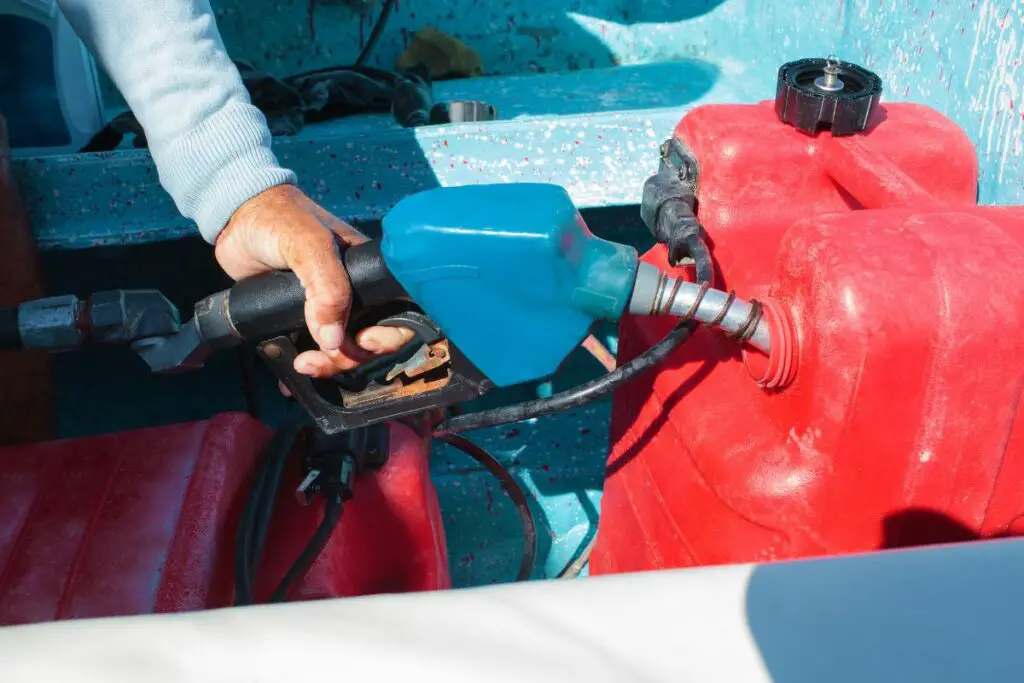When it comes to boating, there are many problems that can occur – many of which are par for the course, and can happen all of the time.
One example is water getting inside the gasoline tank – something that can affect the functionality of the boat if left unchecked. But how exactly can you get the water from the gas tank, and what happens if it is not fixed?
How To Tell If There Is Water In The Tank
Of course, to be able to fix the water issue, you first need to be able to detect the water in the gas tank of your boat. Luckily, there are a few things you can look out for to detect this problem.
Trouble Starting
The first sign of water in the tank will be trouble getting the engine started. Even if the engine does manage to get going eventually, a labored starting process can be a symptom of water in the tank, and will as such need fixing.
It is important to realize what a combustion engine needs – namely gasoline, a spark, and proper ventilation – and if any of these things are compromised by water, then it will affect the process of combustion.
Erraticism/Spluttering
If you manage to get the engine running, but the engine sound and function is erratic and spluttering, then this is a good indication that there is water in the tank.
If this is the case, then something needs to be done to ensure the continued health of the boat engine, and to save you from a more expensive outcome further down the line.
Black Exhaust Smoke
If, once the engine is started, black smoke begins to emanate from the boat’s exhaust, then this could be a sign that there is water in the gasoline tank.
The smoke indicates that the fuel is contaminated, and that it is not burning completely, thus creating the black smoke.
Fuel Discoloration
Another way to assess the validity of the fuel is to assess the color. If there is water present in the tank, then the color of the fuel will change from the usual clear appearance to a murkier, cloudier appearance.
You can also check for the presence of water bubbles in the oil – something that also obviously indicates the presence of water in the tank.
Corrosion
You can also check to see whether metal components within the fuel tank have become corroded. This is a good indication that there is water in the tank, and that it has been contaminated in this way for some time for corrosion to occur.
You can see the signs of corrosion in the hoses, fuel injectors, fuel pumps, and engine block itself.
Fouled Spark Plugs
The presence of water can also foul the spark plugs in the engine – the key component to achieve combustion, and thus movement from the engine.
When these are fouled, the movement of the boat will be less stable, more erratic, and will not feel like it should.
How To Fix The Problem
Luckily, there are a few methods you can use to fix the problem, remove the water from the gas tank, and return your boat to proper working condition.
Draining The Tank

The best way to remove the water and return the tank to working order, is to completely drain it of all fluids, and then refill it afterwards.
This might seem like an awful waste of fuel – especially if the tank is full – but the fact of the matter is that the fuel is already contaminated, and thus no use anyway.
Wet Vacuum
One of the best ways to ensure you have removed every last drop from the tank is to use a wet vacuum – as these can safely suck up all the moisture and ensure that the tank is bone dry ready for refilling.
This only works once the tank is already drained, and can just be a good method of ensuring that every last drop is taken care of.
How To Avoid Water In The Future
As well as the above methods, there are also other things you can do to ensure that you do not have the same problem again in the future – or at least to ensure that it doesn’t happen as often.
Add Fuel Stabilizer
Firstly, you should install a fuel stabilizer – especially if the boat sits idle for extended periods of time. As its name suggests, this component protects the fuel from contamination that can otherwise occur.
Inspect Regularly
You also need to ensure that you are checking the fuel (and the fuel components) regularly. This is important, and should be a regular part of your general boat maintenance.
Check Vents & Seals
You should also conduct checks to see that the fuel vents and seals are working properly.
Corrosion Inhibitor
If you are using ethanol fuel, then you could fit a corrosion inhibitor that will help limit natural corrosion – both reducing the risk of water entering, and the damage caused by water once within.
Replace Tank & Lines
You could also remove and replace the fuel tank and lines once every 5 years to ensure functionality.
Do Not Overfill
You also need to make sure that you are not overfilling the tank with fuel – as this can cause uneasy seals to allow water into the tank more easily.
Final Thoughts
It’s certainly true that, when it comes to boating, there are certain things that you should expect to happen once every so often – with water in the gasoline tank being one of them.
However, thanks to these handy methods, you can soon fix it, and be running in no time.
So if you are looking to remove water from a boat gasoline tank, then be sure to give this method a try. Something tells me you won’t be disappointed!

